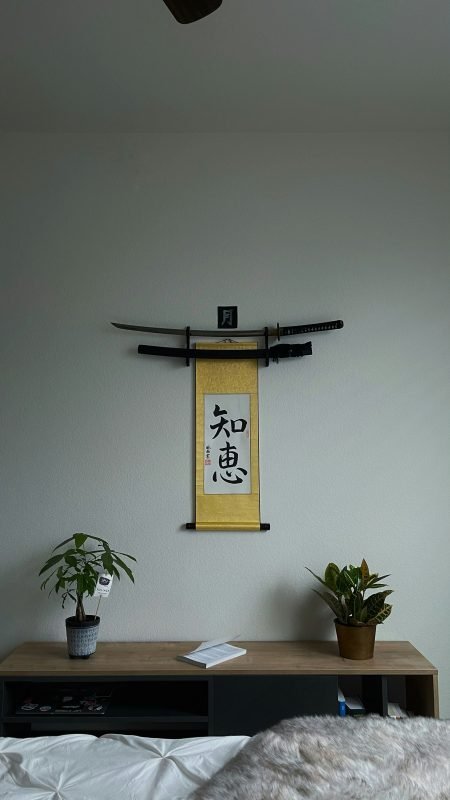The History of the Katana
The History of the Katana: Japan’s Legendary Sword
Few weapons in history carry the mystique and elegance of the katana. Known for its razor-sharp edge, curved blade, and deep cultural symbolism, the katana is more than a sword — it’s a symbol of honor, discipline, and artistry. Whether you’re a martial artist, a collector of handmade swords, or looking to buy katana online, understanding its history adds depth to your appreciation.
Origins of the Katana
The katana evolved during Japan’s Kamakura period (1185–1333), a time when samurai warriors rose to power. Earlier Japanese swords were straight and heavily influenced by Chinese and Korean designs. But as warfare changed, a need emerged for a weapon that could be drawn and used quickly.
Enter the katana — a single-edged, curved sword designed to be worn edge-up, allowing samurai to draw and cut in one swift motion.
The Craft of the Swordsmith
Traditional katanas were forged using tamahagane, a rare Japanese steel made from iron sand. Swordsmiths would fold and hammer the steel multiple times, creating a blade with layers that were both hard and flexible — a perfect blend for combat.
The forging process was spiritual as much as technical. Many smiths saw their craft as sacred, and the katana itself was believed to hold the soul of the samurai who wielded it.
Even today, custom swords inspired by the katana are forged using similar techniques to honor that tradition.
Katana in Samurai Culture
In feudal Japan, the katana wasn’t just a weapon — it was a mark of social class and warrior code. Only the samurai were permitted to wear the katana and wakizashi (a shorter sword). This pair of swords, known as daisho, represented the samurai’s honor and readiness to defend their values at any moment.
The katana was central to Bushido, the “way of the warrior.” Losing one’s sword meant losing one’s honor. Many samurai even named their swords and treated them with deep respect.
Modern Appreciation and Collecting
Today, the katana is one of the most sought-after handmade swords in the world. Collectors admire:
- The craftsmanship behind folded steel
- The unique hamon (temper line) created during the clay-tempering process
- The sword’s graceful curvature and perfect balance
Thanks to modern blacksmiths and online platforms, you can now buy katana online or even order custom swords based on traditional samurai techniques.
The Katana’s Global Influence
The katana has influenced sword-making far beyond Japan. Its aesthetics and cutting ability have inspired swordsmiths globally. Even in regions with rich traditions like the Middle East, collectors who value Ottoman sword or Zulfiqar sword designs still admire the katana for its iconic form and cultural depth.
In pop culture — from films to anime to video games — the katana is a symbol of precision, discipline, and deadly beauty. It continues to capture the imagination of people worldwide.
The Role of the Katana in Samurai Culture
The katana became the weapon of choice for the samurai, the warrior class of feudal Japan. It was more than just a tool for battle; it was an extension of the samurai’s soul and a symbol of their honor and status. A samurai’s katana was often passed down through generations, becoming a family heirloom imbued with deep meaning.
The katana was also an essential part of the samurai’s code of conduct, known as the “Bushido” code. Bushido emphasized loyalty, bravery, and honor, and the katana was a physical representation of these ideals. It was said that a samurai could never draw his katana without being ready to use it, as to do so would be an affront to the blade’s significance.
The Decline of the Samurai and the Katana
The Meiji Restoration of 1868 marked the end of the samurai era in Japan, as the country modernized and the samurai class was abolished. With the rise of firearms and the centralization of power in the hands of the emperor, the katana lost much of its practical military use. However, the katana continued to hold symbolic value in Japanese culture and remained a part of ceremonial practices and cultural traditions.
In the modern era, the katana has become a symbol of Japan’s rich history and craftsmanship. It is often seen in martial arts, where practitioners study the ancient techniques of swordsmanship. Many contemporary swordsmiths continue to craft katana using traditional methods, preserving the art of Japanese sword making.
The Katana in Popular Culture
In the 20th and 21st centuries, the katana has become a globally recognized symbol, thanks in part to its portrayal in films, anime, and literature. Iconic figures such as samurai warriors, ninjas, and even fictional characters like those in “Star Wars” have popularized the katana in modern pop culture.
In particular, Hollywood films and television series have often featured katana-wielding characters, further cementing its image as a weapon of elegance and deadly precision. The katana’s sleek, curved design has made it a favorite weapon for filmmakers and artists who wish to evoke a sense of history and mystique.
Conclusion
The katana is more than just a sword; it is a symbol of Japanese culture, craftsmanship, and history. From its origins in feudal Japan to its continued presence in modern times, the katana has captured the imagination of people around the world. Its unique design, exquisite craftsmanship, and deep cultural significance make it one of the most revered swords in history.
To discover more about the history of the katana and explore our collection of handmade swords, visit swordbuy.co.
Explore authentic katana replicas, handmade by skilled artisans, at swordbuy.co


